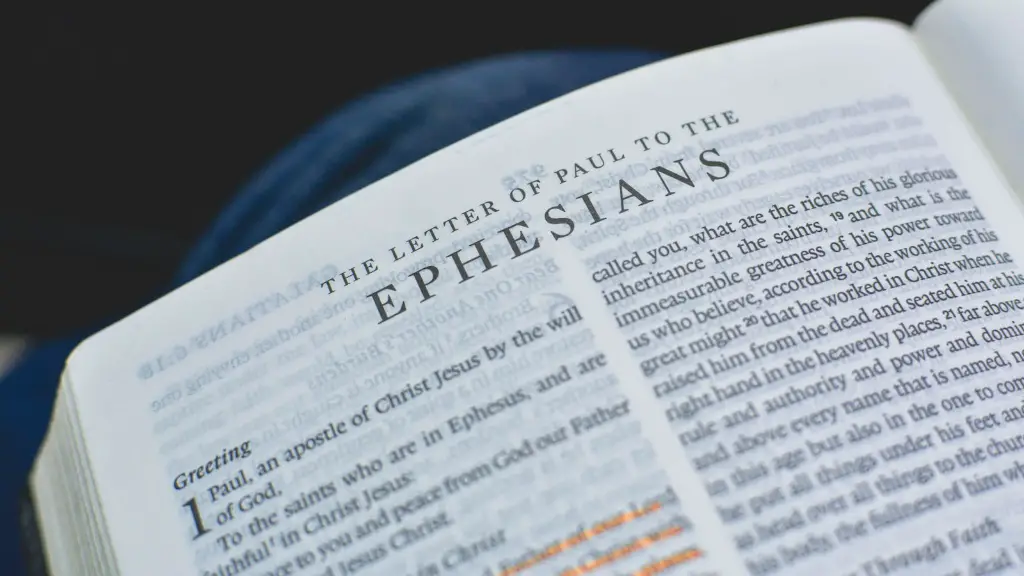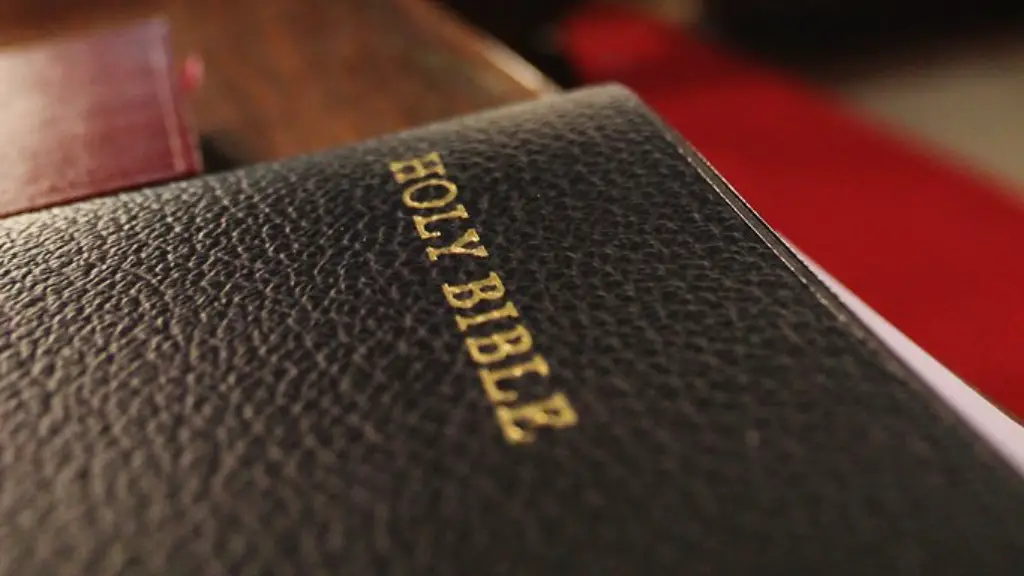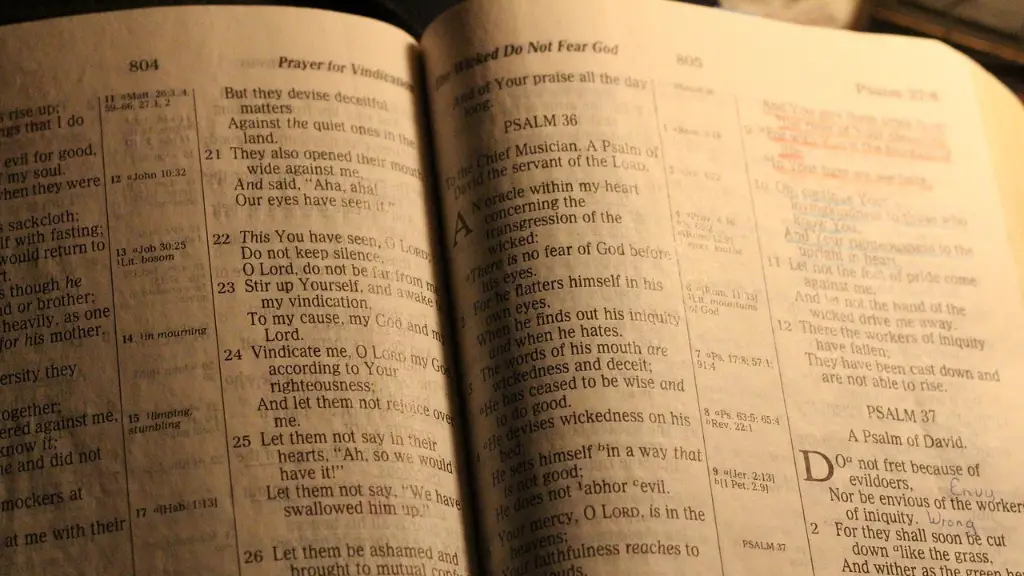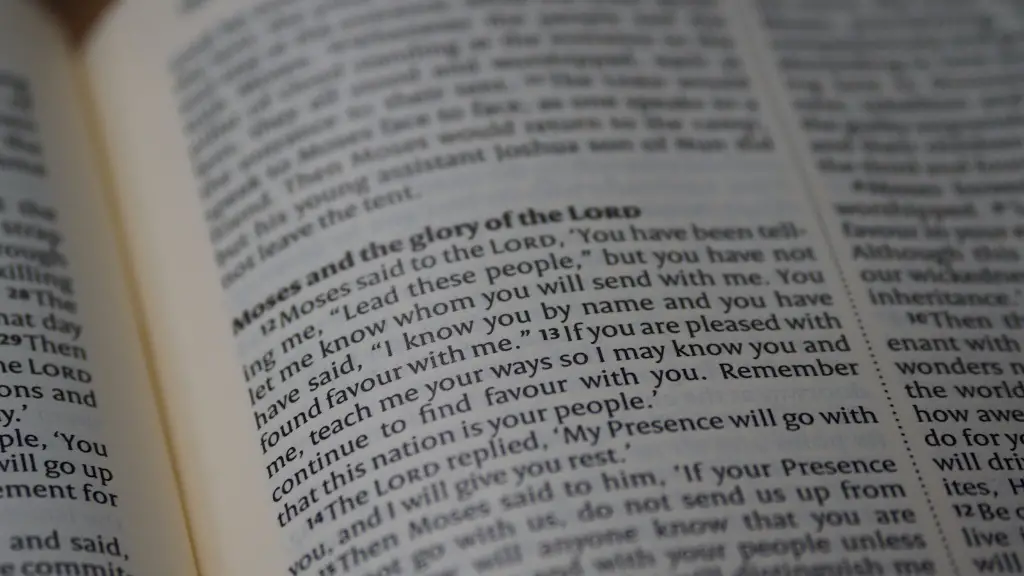The concept of the Trinity is an ancient one, and one which has long been a source of debate and discussion. In Christianity, the Trinity is an attempt to explain the nature of God and his relationship to Creation. But what does the Bible say about the Trinity? This article attempts to answer that question.
At its core, the Trinity is a doctrine which states that there is one and the same God existing in three equal persons – the Father, the Son, and the Holy Spirit. In other words, it is an attempt to explain how the one God can exist as three distinct persons at the same time. It is also an attempt to explain how God can be in three places and know all things, while also being a personal God and being present with us.
There are numerous verses in the Bible which refer to the Trinity. One of the clearest is John 14:16-17, which says: “And I will ask the Father, and he will give you another Helper, to be with you forever, even the Spirit of truth…etc.” This specific verse is a clear reference to the idea of the three persons of the Trinity existing as one.
In addition, a great deal of other verses are used to support and augment the doctrine of the Trinity, though they are often taken out of context. For example, Genesis 1:26 states, “Let us make man in our image,” which is seen as referring to the three persons of the Trinity. Matthew 28:19 is another example, which states, “Go therefore and make disciples of all nations, baptizing them in the name of the Father, Son and Holy Spirit.”
Obviously, the Bible does not offer a specific explanation of the Trinity, and so theologians must rely on the accumulated evidence from the Bible and other sources to reach a conclusion on the matter. This has led to much disagreement, with some holding to the traditional interpretation of the doctrine and others attempting to formulate an alternative understanding.
In the end, the precise nature of the Trinity is something that is beyond the scope of this article, as it is a complex and multifaceted topic. What is clear, however, is that the Bible does make reference to the idea of the Trinity in numerous places, and it is up to each individual to make up their own mind on the matter.
Different Interpretations of the Trinity
In Christian theology, there have been different interpretations of the Trinity. The most common interpretation is that of a one-God, three-persons Trinity. This is the one accepted by most churches today and is based on the teaching of the first ecumenical councils of Nicea and Constantinople. The Orthodox Christian Church has a slight variation to this, however, teaching that the Trinity consists of three persons but is still one “Divine Nature.”
Another popular interpretation is that of social Trinitarianism, which states that the three persons of the Trinity are equal but distinct, and therefore the one God exists only in a relational way. Proponents of this view point to the Trinity being addressed with the singular pronoun “Him” in Scripture, as evidence for their interpretation.
There are also non-Christian interpretations of the Trinity, such as those of the Unitarian Universalist Church and the Baha’i Faith. These interpretations emphasize the unity and oneness of God and reject the idea of a three-person Trinity.
Ultimately, it is impossible to definitively state what the Trinity is and what it means, as the Bible itself does not provide a clear answer. Different faiths and denominations have come up with different interpretations of the Trinity, and it is up to the individual to decide what they believe.
Trinity in the Old Testament
While the concept of the Trinity is most associated with the New Testament, it can also be found in the Old Testament. For example, Exodus 3:14 mentions God being referred to as the “I AM,” which can be seen as an allusion to the three persons of the Trinity existing as one. Similarly, Isaiah 9:6 states “For unto us a child is born, unto us a son is given” – this is seen as a reference to Jesus being given as the Son of God.
Other Old Testament references to the Trinity include verses such as Gen. 1:26, “Let us make man in our image, after our likeness,” and Gen. 11:7, “Come, let us go down, and there confuse their language.” Both of these references have been interpreted as references to more than one person, and can be seen as a precursor to the idea of the Trinity.
In conclusion, while the Bible does not offer any definitive answers to the question of the Trinity, there are numerous references to the idea of a multi-person God throughout the Bible. It is up to each individual to make up their own mind as to what the Trinity means, and what its implications are.
The Council of Nicaea
The question of the Trinity first became a topic of debate during the 4th century in the early years of the Church. At this time, different denominations such as the Arians and the Trinitarians argued about who was correct regarding the nature of Jesus. In order to resolve the dispute, the Council of Nicaea was convened in 325 AD.
At the council, the Trinitarians argued that Jesus was fully God and fully man, while the Arians argued that Jesus was only divine, and not a full person. The debate went on for over a month, and in the end a compromise was reached – the Nicene Creed, which stated that Jesus was “consubstantial” with the Father. This meant that Jesus, who was fully God and fully man, was not of the same substance as the Father, but still shared all of his attributes.
The Council of Nicaea’s decision was seen by many as a rejection of the Arian view and a confirmation of the Trinitarian view, though this was not the case. Nonetheless, it did serve to solidify the idea of the Trinity in the minds of many, and it has since become one of the core doctrines of many Christian denominations.
Trinity in Other Faiths
The concept of the Trinity is not limited to Christianity – it can be found in many other faiths and beliefs as well. In Hinduism, for example, the Trinity is known as the Trimurti, which consists of Brahma the Creator, Vishnu the Preserver, and Shiva the Destroyer. Similarly, in Buddhism the Trinity is known as the Three Jewels, which are the Buddha, the Dharma, and the Sangha.
In other faiths, such as Islam, Judaism, and even some forms of ancient paganism, the concept of the Trinity is not present. This is due to the fact that these faiths do not accept the concept of God being a plurality of persons as is found in Christianity.
Overall, it is clear that the doctrine of the Trinity has been around for centuries, and has been an integral part of numerous faiths and belief systems. It can be seen as an attempt to explain the nature of God, and how the one God can be in different places at the same time. For Christians, the Trinity is an important doctrine which forms the basis of their faith.
Symbols of the Trinity
One of the most recognizable symbols associated with the Trinity is the triquetra, a triangular symbol formed by three interconnected circles. This symbol has been used by many cultures throughout history to signify the concept of the Trinity, and is often seen on jewelry, artwork, and iconography related to Christianity.
Another symbol used to represent the Trinity is the interlaced triangle, which is formed by three overlapping equilateral triangles. This symbol also connects to the triquetra, as the interconnected circles form a triangle in the middle. This symbol has been used by various cultures throughout history, and has more recently become associated with the concept of the Trinity in Christianity.
The concept of the Trinity is also often represented using the shape of a shamrock, a three-leaved plant which is native to Ireland. The association of the shamrock with the Trinity likely comes from the plant’s significance in Irish folklore and culture.
Many other symbols have been used throughout history to represent the Trinity, and it is up to the individual to decide what symbol best suits their understanding of the doctrine. Regardless of which symbol is chosen, it is clear that the concept of the Trinity is one which has been around for centuries and is found in many different faiths and belief systems.
How Does the Trinity Affect the Church?
The doctrine of the Trinity is an important one for Christian churches. Most Christian denominations affirm the doctrine and view it as central to their faith. Additionally, the doctrine of the Trinity serves to define the roles and functions of the Father, Son, and Holy Spirit in the life of a Christian.
For example, the doctrine of the Trinity states that the Father, Son, and Holy Spirit are all God, and are therefore equal in nature and power. Thus, they are all involved in the salvation and sanctification of the believer. This means that a Christian’s relationship with God is not just to the Father, but to the Son and Holy Spirit as well.
In addition, the doctrine of the Trinity has had a significant impact on the way that churches are run. For example, most Christian churches have three levels of leadership – the pastor, the deacons, and the elders – all of which are seen as representing the three persons of the Trinity. Additionally, prayers and worship services often include mentions of, and references to, the Father, Son, and Holy Spirit.
Overall, the doctrine of the Trinity is an important one for Christians, and has had a significant impact on the way that churches are run and how they conduct worship. It serves to emphasize the essential unity of God, while also affirming the distinctness and diversity of the three persons of the Trinity.
Conclusion
The concept of the Trinity is an ancient one and has been an integral part of Christian theology for centuries. Though the exact nature of the Trinity is open to interpretation, the Bible does make numerous references to the idea of a multi-person God. In addition, other faiths, such as Hinduism and Buddhism, have their own interpretations of the Trinity.
The doctrine of the Trinity has had a significant impact on Christian churches and has resulted in many symbols being created to explain the concept. Additionally, the doctrine has had an impact on how churches are run and how worship services are conducted. Ultimately, it is up to each individual to decide what the Trinity means, and how it should be interpreted.





